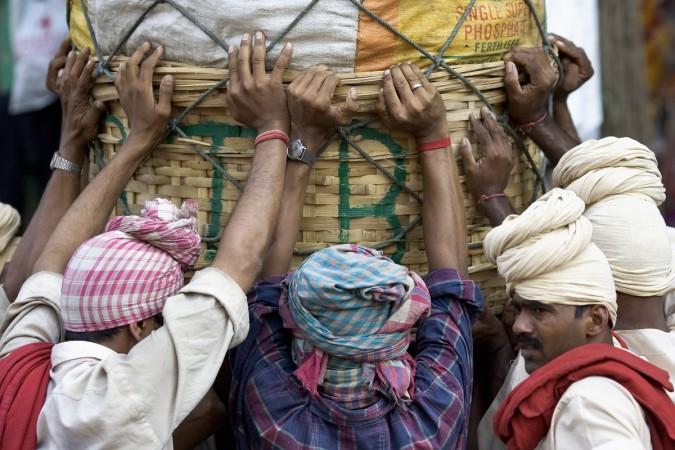
In an attempt to improve the life of the extremely poor people of India, the government has drafted a Rs 1.2 lakh crore plan to provide universal social security coverage for the poorest people of the country.
MCD polls: BJP promises social security for unorganised sector
This is a part of a bigger scheme that is being planned to benefit all the individuals, who have been divided into three categories.
The first category of people are the poorest 20 percent, who will get a government payout; the second being those who subscribe on their own and the formal sector workers who will need to set aside a fixed proportion of what they earn toward the scheme.
What is the need for the scheme
According to The Economic Times, India's total workforce currently stands at 450 million. Though the statistics make it sound that a large fraction of the Indian population is employed, it is rather saddening that only a little over 10 percent are in the organised sector and get to enjoy the basic social security.
In fact, among the 10 million people who add on to the workforce every year, most of them don't receive the minimum wage and lack any kind of social security coverage, the reason being that most them belong to the unorganised sector.

Features of the scheme
The scheme which is being planned by the Ministry of Labour and Employment will have two tiers.
While the first category will ensure a mandatory pension, a death or disability insurance and maternity coverage, the second category comprises optional medical, sickness and unemployment coverage.
"Funds collected under the universal social security scheme will be divided into sub-schemes and be ringfenced, meaning the benefits and the contribution will be commensurate," a senior government told ET.
![Scheme will also cover maternity benefits for poor. [Representational Image] pregnant, arnold chiari symptom](https://data1.ibtimes.co.in/en/full/640558/pregnant-arnold-chiari-symptom.jpg?h=450&l=50&t=40)
The official also explained that the optional element will depend on the funds collected under the mandatory scheme.
The Labour Ministry will send it to the Finance Ministry to get it evaluated and start the funding process. It hopes to start the scheme by next year, ahead of the 2019 general election.
The government is also pushing its limit, despite its pledge to stick to the deficit target.
However, this might be seen as an effort by the government to gain broad popular support and start gathering leverage well before the 2019 elections.










!['He is done with the team now' : Angry Virat Kohli slams the bat, kicks the ground, yells at RCB team as SRH smashes runs [reactions]](https://data1.ibtimes.co.in/en/full/796956/he-done-team-now-angry-virat-kohli-slams-bat-kicks-ground-yells-rcb-team-srh-smashes.jpg?w=220&h=138)




